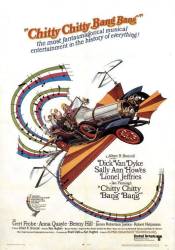
Question: Who was the dwarf in the castle scene when the children arrive at the castle in the child catcher cage?

Question: In the scene where Cheyenne visits Jill at the McBain's residence for the first time, he asks her whether she knows something about a man with a harmonica, although the three of them (Cheyenne, Harmonica and Jill) met earlier in the movie when Cheyenne tells Harmonica to "watch those false notes." Why doesn't Cheyenne just ask her for the man whom she probably still remembers from this event?
Answer: The movie was filmed at multiple locations in Spain and Italy, and also in Utah. Chances are they filmed out of sequence and made minor changes to the script later in the movie. There are many things left unclear in the movie, for example the same scene at the cantina/store, just after Cheyenne's crew shows up, he refers to Harmonica by his name when no-one said his name up until that point.
Answer: He meant what does she know about him personally. What's his real name, where does he come from and why is he so interested in everything.
Then he should have asked "do you know something about THE man with THE harmonica?" instead of "do you know something about A man going around playing A harmonica?" (time stamp 01:05:25 for the restored version) or am I missing something? He already knows that she has seen him because he was there so he could just ask "do you know something about the guy with the harmonica we met at the bar earlier?" I just don't understand why Cheyenne is using an indefinite article because he and Jill both know who he is referring to.

Question: What is the name of the melody that Mia Farrow sings (La La La Laaaa, La La La Lalala La Laaaaa) at the beginning of the movie, as the title/credits are being displayed?
Chosen answer: It doesn't have a specific title. It was a lullaby written for the film by Krzysztof Komeda. There's a few variations of the lullaby heard throughout the film, the opening credits version is listed as "Rosemary's Baby Main Theme - Vocal."
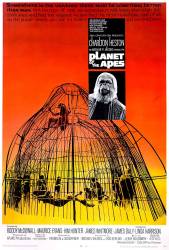
Question: At the end he sees the Statue of Liberty on the beach. How did the statue get there from Ellis Island?
Answer: He's in the same location as Ellis Island. Thousands of years have resulted in significant changes geographically.
Answer: The statue was destroyed during the nuclear war at some point in the past. The remnant of it had washed ashore to where Taylor finds it.
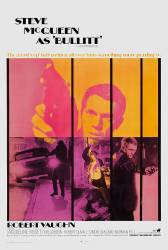
Question: What character did the actor John Aprea play in the movie? The credits at the end lists him as 'The Killer', but who did he kill? He wasn't one of the two hit men at the hotel.
Answer: Notice: Aprea is credited as "Killer", not "The Killer." I think this confuses reviewers, as they assume he must be one of the hit men. However, the hit men are credited as "Phil" (Bill Hickman) and "Mike" (Paul Genge). Genge is much older than Aprea and Aprea does not look like the grey-haired hit man, as another contributor has pointed out already. There is no other killer in the plot. Perhaps Aprea's scenes were cut.
Answer: The doctor that alerts Bullitt that the grey-haired hitman is in the hospital looks like Aprea. He calls himself Dr. Kenner, and that character is uncredited. Maybe "Killer" was supposed to be "Kenner" in the credits?
Answer: Aprea portrays the Organization hood who shoots wildly at Johnny Ross as Ross' car careens out of the parking lot into and down the alley during his getaway in Chicago.
Answer: In a Bullitt movie clip on the Turner Classic Movies (TCM) website, it identifies John Aprea as the killer who goes to the hospital to murder the witness. Bullitt chases him to the basement toward the end of the film.
The killer that Bullitt chases is Paul gange (listed in the credits in the role of "Mike") despite the TCM website. Aprea is listed in the movie's credits as the killer, but also lists gange as Mike. Look the name up on IMDB and you can see from his photo that he is the guy Bullitt chases. Why John Aprea - at least 20 years younger than the killer in the movie - is credited as the killer, I have no idea. And I have no idea where in the movie Aprea really appeara.
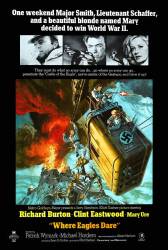
Question: Mary's attire looks more like 1960s than 1940s. Any info on this?
Chosen answer: This is not unusual in older films. Earlier costume designers were less attentive to historical accuracy and freely incorporated current fashion trends into period movies. It was just an accepted practice and movie audiences back then were often less discerning and/or unaware of inaccuracies. Today's costumers have greater access to historical information, do more research, and strive for authenticity.

Question: Nick was supposed to be watching Fanny sing at Keany's, but I just don't see him in the audience shots. Error?
Answer: If you mean their first meeting, most likely it was a deliberate decision by the filmmakers that Nick wasn't seen in the audience. The scene was constructed to introduce Nick and show Fanny's reaction as she opens the dressing room door, seeing him for the first time. Nick being seen earlier would also have lessened the audience's reaction as well.
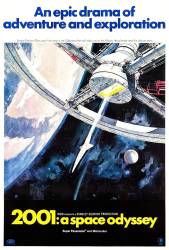
Question: I don't understand the significance of the monolith or the starbaby. Can someone explain it to me?
Answer: As author Arthur C. Clarke explained it, the first Monolith (the one seen at the beginning of the film and then buried on the Moon) was a space probe from an incomprehensibly more advanced alien intelligence that resided inside a star elsewhere in the cosmos. The Monolith's objective was to seek out lifeforms that had potential and "tweak" their neural evolution, causing them to evolve toward intelligence. In the case of Mankind on Earth, once the modification was made, the Monolith probe retreated to the Moon and waited 4 million years for Mankind to reach it. When Mankind reached the Moon, the Monolith sent a signal to the next phase of the experiment, which was another Monolith in orbit of Jupiter. When Mankind reached the Jupiter Monolith in a matter of months, the Monolith acted as an interdimensional portal to the other side of the universe, transporting the evolved human specimen to its creator (that resided within a star). The creator intelligence found the specimen (Dave Bowman) to be of acceptable quality and rapidly evolved him to the next level, a Star Child. The Star Child is a "godly" evolution of Mankind. The Star Child chooses to instantaneously return to its home planet (Earth), where it stops a nuclear war.
Answer: The monolith is a monitor placed by the aliens to track the progress of developing civilizations. When humanity found the monolith on the Moon, that signaled a certain level of technological advancement. The starbaby is the evolution of the astronaut, as the symbol of humanity, from "Earth-bound" to a true child of the universe, turning his back on the Earth and looking toward the stars.
In both the Arthur C. Clarke story and in the movie, the Star Child does not "turn his back on Earth"; quite the contrary, as soon as Bowman transforms into the Star Child, his first impulse is to instantaneously return to Earth, which he does just in time to stop a nuclear war. In essence, Bowman becomes the guardian of Earth.
Answer: In 3001: The Final Odyssey, Clarke makes clear what many already suspected: The Monolith was malfunctioning by the time it tweaked human evolution. It increased human aggression in order to assure human survival, but this was a hasty move, which saddled humanity with a never ending series of destructive conflicts. Kubrick also hinted at this in a later movie. The Monolith appears in Full Metal Jacket, presumably inspiring the soldiers in the Vietnamese War to solve their problems by killing, just as it had inspired the fighting hominids millions of years before.
The monolith from 2001 does not appear in Full Metal Jacket. There is a tall burning building in the background during Cowboy's death scene but it takes a hell of a stretch of the imagination to see it as a monolith. It's just a ruined building. Kubrick himself confirmed this in an interview with Rolling Stone magazine - it's combination of coincidence and wishful thinking.
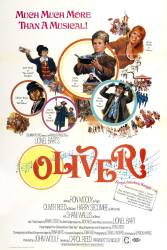
Question: Why was this movie rated G? It does contain some violence and a murder scene and some content that's inappropriate for children.
Chosen answer: You are correct that "Oliver" does have some material that might be intense for young children - including a murder, some minor violence, issues of adoption, child abuse, kidnapping, and even some sexual content (but only by innuendo). Drinking alcohol is also involved, and some of the characters with whom we are meant to sympathize are, in fact, thieves. But intense content does not necessarily preclude a movie from obtaining a "G" rating. There have been several G-rated movies which have content, including killing, that could be frightening for children, including "Bambi," "The Lion King," "Willie Wonka and the Chocolate Factory," and "The Wizard of Oz," to name a few. In "Oliver," most of the violence is alluded to, and the murder of Nancy is committed out of sight (only Sykes' hand is visible, and Nancy's screams are heard), though it is frightening and realistic. Violence can be permitted in G-rated films, as long as it is "minimal." Sexual innuendo is permitted, in small doses, as long as lewd acts aren't shown. Intense content is also permitted. Drug use is not permitted, but I suppose the tavern scenes are cartoonish enough as to not warrant a more harsh rating. The bottom line is that ratings are determined by the MPAA - Motion Picture Association of America, and that association is given wide latitude and discretion. Apparently, the "mature" content of "Oliver!" was not viewed as rising to a level which the MPAA felt would warrant a more stringent rating.

Question: How old was Olivia Hussey when this movie was made? Also, what is the name of the guy who plays Romeo and how old was he?
Answer: Olivia Hussey was born April 17, 1951 so she was probably still 16 when the film was being made, but 17 when it was released in 1968. Leonard Whiting was born June 30, 1950 - almost a year older than Olivia.

Question: Are 'Dawn of the Dead' and 'Day of the Dead' the morning and day after 'Night of the Living Dead'?
Answer: No. Each is a progression of several weeks or years.

Question: Serious spoiler alert, but this has always puzzled me. At the end of Barbarella the Black Queen unleashes "Matmos", an evil energy which destroys nearly everybody and everything in the film. Pygar (the blind angel) escapes, only rescuing two people from the cataclysm: Barbarella and the Black Queen. Barbarella asks Pygar why he saved the Black Queen after all the evil things she did (she even blinded Pygar). Pygar replies "an angel has no memory." I never got the point of that. What did Pygar mean? (In his previous conversation he recalled things that happened before he was blinded, so obviously he did have a memory.) And I could not see the point of or meaning to this ending at all. Did any of this make sense to anybody else?
Answer: You say that Barbarella was beyond lame-it was totally atrociously bad and ludicrous. It was released in autumn 1968, when I was 12, and too young to see it at the cinema. I finally got to see Barbarella when I was 18 and it was shown late one night on television. I wholly concur: I thought it was totally, atrociously bad and ludicrous, and my opinion has not changed since.
Answer: I concede your point. Perhaps I was being a bit too literal. When Pygar says he has no memory, he may not mean that all past events clear from his mind (in the way that, for example, you could delete a computer file from your laptop). Instead, he might mean he does not dwell on the past, or he does not retain bitterness or anger for past wrongs, or he does not return evil on those who were bad to him. I think the film was based on a comic that ended in pretty much the same way. All the same, I always thought the ending was rather lame. It was as if somebody told Roger Vadim (the director) "hey, this film is supposed to be 90 minutes long, but we've done 89 minutes filming, and we still haven't got an ending." So Roger Vadim got the Black Queen to unleash Matmos and destroy everything. (To be pedantic, Barbarella is 98 minutes long, but I hope you understand what I mean.) Personally I thought the ending of "Monty Python And The Holy Grail", where a police force stops the film, was a similar disappointment.
Answer: Dennis Waterman.